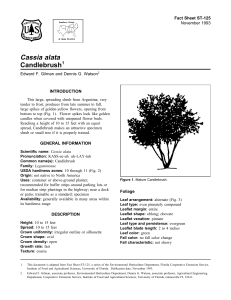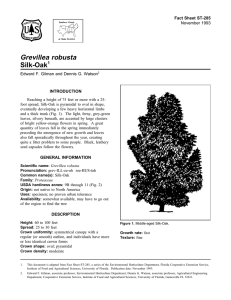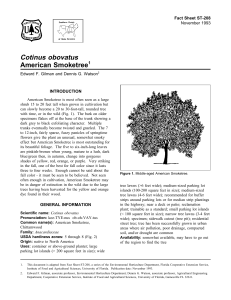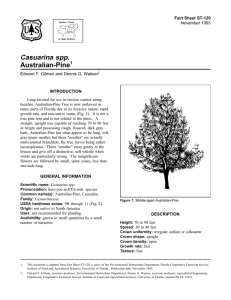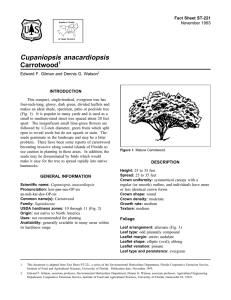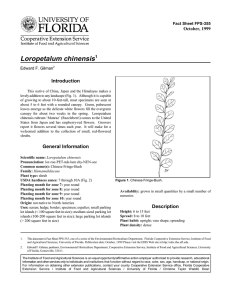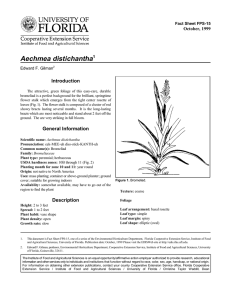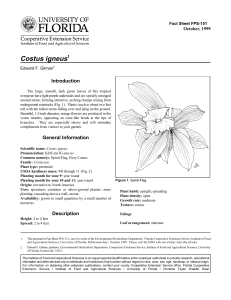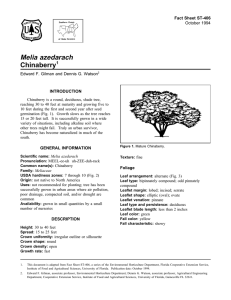Laburnum spp. Goldenchain Tree Fact Sheet ST-340 1
advertisement
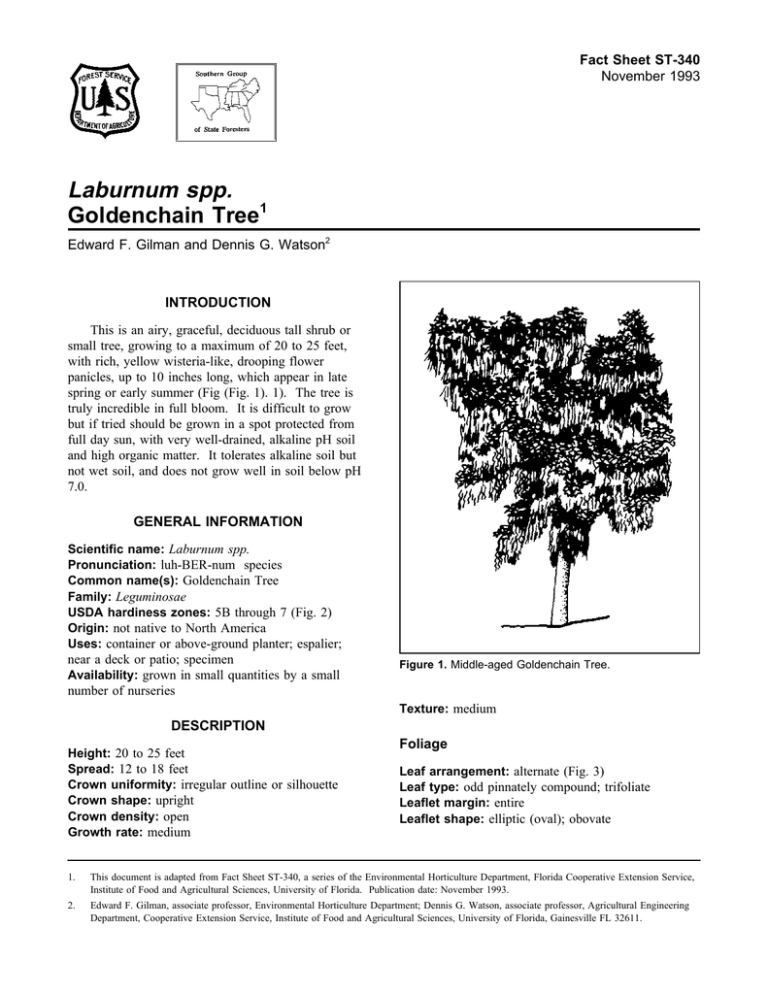
Fact Sheet ST-340 November 1993 Laburnum spp. Goldenchain Tree1 Edward F. Gilman and Dennis G. Watson2 INTRODUCTION This is an airy, graceful, deciduous tall shrub or small tree, growing to a maximum of 20 to 25 feet, with rich, yellow wisteria-like, drooping flower panicles, up to 10 inches long, which appear in late spring or early summer (Fig (Fig. 1). 1). The tree is truly incredible in full bloom. It is difficult to grow but if tried should be grown in a spot protected from full day sun, with very well-drained, alkaline pH soil and high organic matter. It tolerates alkaline soil but not wet soil, and does not grow well in soil below pH 7.0. GENERAL INFORMATION Scientific name: Laburnum spp. Pronunciation: luh-BER-num species Common name(s): Goldenchain Tree Family: Leguminosae USDA hardiness zones: 5B through 7 (Fig. 2) Origin: not native to North America Uses: container or above-ground planter; espalier; near a deck or patio; specimen Availability: grown in small quantities by a small number of nurseries Figure 1. Middle-aged Goldenchain Tree. Texture: medium DESCRIPTION Height: 20 to 25 feet Spread: 12 to 18 feet Crown uniformity: irregular outline or silhouette Crown shape: upright Crown density: open Growth rate: medium Foliage Leaf arrangement: alternate (Fig. 3) Leaf type: odd pinnately compound; trifoliate Leaflet margin: entire Leaflet shape: elliptic (oval); obovate 1. This document is adapted from Fact Sheet ST-340, a series of the Environmental Horticulture Department, Florida Cooperative Extension Service, Institute of Food and Agricultural Sciences, University of Florida. Publication date: November 1993. 2. Edward F. Gilman, associate professor, Environmental Horticulture Department; Dennis G. Watson, associate professor, Agricultural Engineering Department, Cooperative Extension Service, Institute of Food and Agricultural Sciences, University of Florida, Gainesville FL 32611. Laburnum spp. -- Goldenchain Tree Page 2 Figure 2. Shaded area represents potential planting range. Leaflet venation: pinnate; reticulate Leaf type and persistence: deciduous Leaflet blade length: 2 to 4 inches; less than 2 inches Leaf color: green Fall color: no fall color change Fall characteristic: not showy Flower Flower color: yellow Flower characteristics: spring flowering; very Trunk and Branches Trunk/bark/branches: droop as the tree grows, and will require pruning for vehicular or pedestrian clearance beneath the canopy; not particularly showy; should be grown with a single leader; no thorns Pruning requirement: requires pruning to develop strong structure Breakage: resistant Current year twig color: green Current year twig thickness: medium showy Culture Fruit Light requirement: tree grows in full sun Soil tolerances: loam; sand; alkaline; well-drained Drought tolerance: moderate Aerosol salt tolerance: none Soil salt tolerance: poor Fruit Fruit Fruit Fruit shape: elongated; pod length: 1 to 3 inches covering: dry or hard characteristics: does not attract wildlife; inconspicuous and not showy; fruit, twigs, or foliage cause significant litter Other Roots: surface roots are usually not a problem Winter interest: no special winter interest Outstanding tree: tree has outstanding ornamental features and could be planted more Laburnum spp. -- Goldenchain Tree Page 3 Diseases Leaf spot, laburnum vein mosaic and especially twig blight can be problems. Leaf-scald can also be a problem where bark is exposed to afternoon sun in winter. Root rot is also a problem in soil kept too moist. Figure 3. Foliage of Goldenchain Tree. Invasive potential: little, if any, potential at this time Pest resistance: long-term health usually not affected by pests USE AND MANAGEMENT Goldenchain Tree is a good specimen, patio or border accent tree, and can also be espaliered against a wall. In USDA hardiness zone 7, young plants are extremely attractive but do not usually last long since the plant does not tolerate heat well. All parts of the plant are poisonous. Use as a novelty where a brightly-colored accent is needed in the spring. Do not overwater. Laburnum alpinum is a related tree which is just as beautiful in flower. Pests Tree can be attacked by aphids or mealy-bugs.
